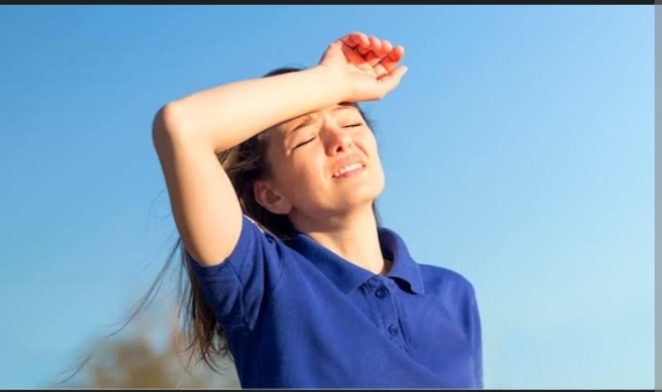Heat stroke is the most serious heat-related illness. It occurs when the body can no longer control its temperature: the body’s temperature rises rapidly, the sweating mechanism fails, and the body is unable to cool down. When heat stroke occurs, the body temperature can rise to 106°F or higher within 10 to 15 minutes. Heat stroke can cause permanent disability or death if the person does not receive emergency treatment.
Heatstroke is a condition caused by your body overheating, usually as a result of prolonged exposure to or physical exertion in high temperatures. This most serious form of heat injury, heatstroke, can occur if your body temperature rises to 104 F (40 C) or higher.
Causes: Heatstroke can occur as a result of:
Exposure to a hot environment. In a type of heatstroke, called nonexertional (classic) heatstroke, being in a hot environment leads to a rise in core body temperature.
This type of heatstroke typically occurs after exposure to hot, humid weather, especially for prolonged periods. It occurs most often in older adults and in people with chronic illness.
Strenuous activity. Exertional heatstroke is caused by an increase in core body temperature brought on by intense physical activity in hot weather. Anyone exercising or working in hot weather can get exertional heatstroke, but it’s most likely to occur if you’re not used to high temperatures
Heatstroke signs and symptoms include:
High body temperature. A core body temperature of 104 F (40 C) or higher, obtained with a rectal thermometer, is the main sign of heatstroke.
Altered mental state or behavior. Confusion, agitation, slurred speech, irritability, delirium, seizures and coma can all result from heatstroke.
Alteration in sweating. In heatstroke brought on by hot weather, your skin will feel hot and dry to the touch. However, in heatstroke brought on by strenuous exercise, your skin may feel dry or slightly moist.
Nausea and vomiting. You may feel sick to your stomach or vomit.
Flushed skin. Your skin may turn red as your body temperature increases.
Rapid breathing. Your breathing may become rapid and shallow.
Racing heart rate. Your pulse may significantly increase because heat stress places a tremendous burden on your heart to help cool your body.
Headache. Your head may throb.
Emergency Solution
Take immediate action to cool the overheated person while waiting for emergency treatment.
Get the person into shade or indoors.
Remove excess clothing.
Cool the person with whatever means available put in a cool tub of water or a cool shower, spray with a garden hose, sponge with cool water, fan while misting with cool water, or place ice packs or cold, wet towels on the person’s head, neck, armpits and groin.


2 Replies to “Understanding Heat Stroke… Causes, Symptoms, and Remedies”